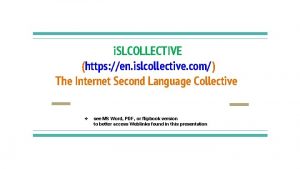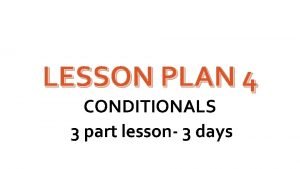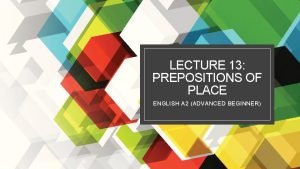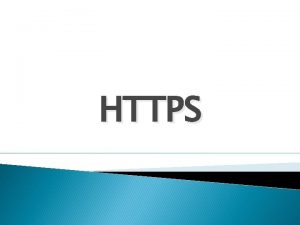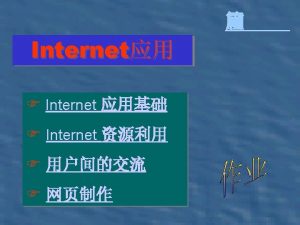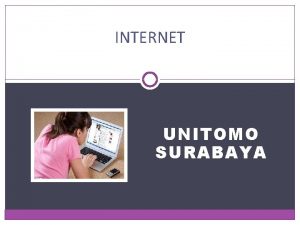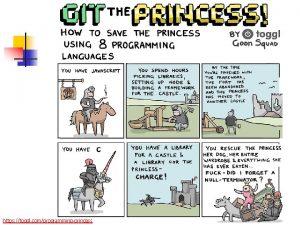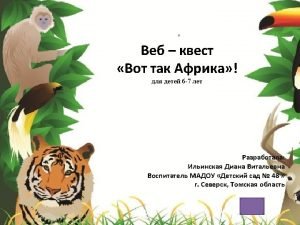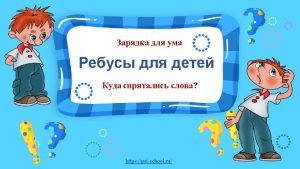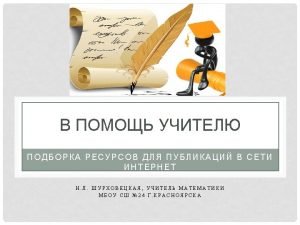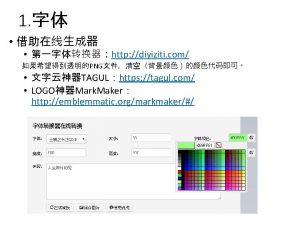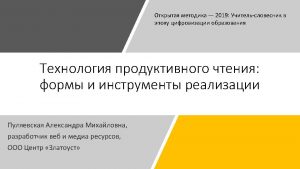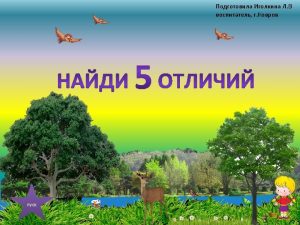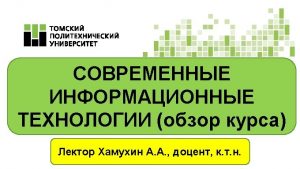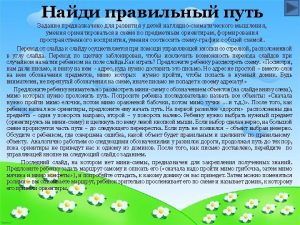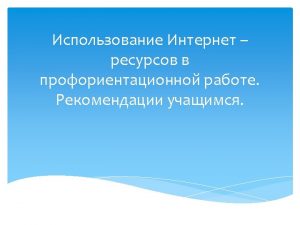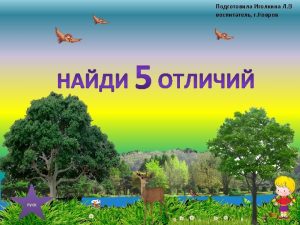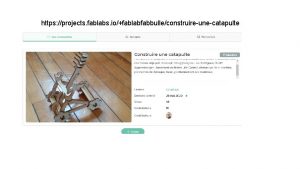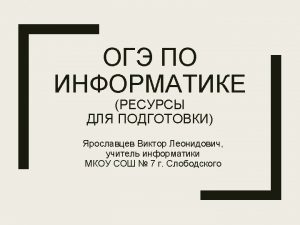i SLCOLLECTIVE https en islcollective com The Internet

























- Slides: 25

i. SLCOLLECTIVE (https: //en. islcollective. com/) The Internet Second Language Collective ❖ see MS Word, PDF, or flipbook version to better access Weblinks found in this presentation

INTRODUCTION: blended and flipped learning – adding video Typically, language learning programs blend online self-study material with face-to-face classes. The important thing is that the instructional design brings together both components. Flipped classrooms are a type of blended learning that have a more specific focus. So, how does this work in language learning? Вивчаємо українську!

Traditionally, students attend classes where language and receptive skills (oral and silent reading, along with listening) are presented by a teacher. Students spend time understanding the new language and practicing it in a more or less controlled way. They are normally then given homework to practice the language further at home. IF WE FLIP this traditional way of teaching, the work that is usually done in the classroom is done at home with good online course material. This frees up classroom time, so students can really try to use the language that they have already studied. The teacher has much more time to help students use the language practically, help them produce in the language, and sort out anything students don’t understand.

What are the benefits of blended learning or, more specifically, why might a flipped classroom be a useful model? • The online course content can be accessed at any time of the day and any time of the week so fits in well around busy timetables. • The teacher still serves as a facilitator of learning, and the experience is shared with other students, but in a fashion that maximizes the time both inside and outside the classroom. • It can be a very cost-effective way to study a language. • Learners often have access to more study material than they would in a conventional face-to-face lesson. • It’s usually fun and learners can use diverse, helpful online learning tools. • This is an excellent and natural component of task-based language learning.

Blended, flipped and video-supported learning as part of task-based language learning Task-based language learning is an approach where the planning of learning materials and teaching sessions are based around doing a task. In education, a task refers to an activity where communication is necessary: for example; deciding something, solving a problem, designing or organizing something, or telling someone to do something.

Task activities are usually rich in language, involving a wide variety of language areas, as well as all component skills; reading, writing, listening and speaking. A task must involve the processing of information, and some kind of communication or interaction. And a task can be something that you do alone, or that you do with someone else or in a group. For example, grammar practice activities, where the aim of each activity is just to practice one particular aspect of language. Helpful online tool for task-based lessons: i. SLCOLLECTIVE is a community of language teachers from around the globe who share self-created worksheets on a free-to-use platform. Currently, they host Word doc/docx and ppt/pptx (Powerpoint PPT) files. The tools are appropriate for all language teachers, whether teaching in schools or doing oneon-one instruction. The site has six language platforms, however new participants can start new language sections. In addition, many of the existing products created for the ESL section of the site are adaptable to teaching Ukrainian as a second language. The site also offers an area to share teaching tips and ideas, as well as a forum/discussion board (See “Menu”).

To upload self-created worksheets, you just use this simple form: https: //en. islcollective. com/share The head of the homepage features available search filters to assist you with tagging your sheet uploads, making them more easily identifiable and findable:

STEP BY STEP i. SLCOLLECTIVE for video-supported learning Of special interest is the video quiz maker and library in the video lessons section. Any You. Tube or Vimeo video can have a quiz component added to it, and your quiz becomes part of a library accessible to others. Follow these easy steps: (BASIC PROCEDURE: After uploading the video you want to use, simply PRESS THE RED “+” BUTTON to go to each quiz component you wish to add)

















There are draft and publish modes, and you can add tags to your video lessons (just as with your work/lesson sheets) to help make them findable to others, including outside your immediate users. Additionally, you can click on "Need help with creating video lessons? " (https: //sites. google. com/view/islcollective-video-lesson-faq) for more assistance. This illustrated step-by-step tutorial section provides other details, including those particular to each of You. Tube and Vimeo, as well as examples and do's & don'ts. It features tabbed sections: an illustrated quick guide to creating, a detailed guide to creating, video lesson types, playing the video lessons, recommended You. Tube channels, and more. Technical issue support: https: //en. islcollective. com/faq Creative Commons copyright of your work: https: //en. islcollective. com/your_copyright Connected on social media via Facebook, Twitter, and Google+.
 Bài thơ mẹ đi làm từ sáng sớm
Bài thơ mẹ đi làm từ sáng sớm Cơm
Cơm Https://en.islcollective.com/
Https://en.islcollective.com/ Zero conditional examples
Zero conditional examples Preposition of place definition
Preposition of place definition What is internet
What is internet Thế nào là mạng điện lắp đặt kiểu nổi
Thế nào là mạng điện lắp đặt kiểu nổi Số nguyên là gì
Số nguyên là gì đặc điểm cơ thể của người tối cổ
đặc điểm cơ thể của người tối cổ Tỉ lệ cơ thể trẻ em
Tỉ lệ cơ thể trẻ em Fecboak
Fecboak Các châu lục và đại dương trên thế giới
Các châu lục và đại dương trên thế giới ưu thế lai là gì
ưu thế lai là gì Môn thể thao bắt đầu bằng từ đua
Môn thể thao bắt đầu bằng từ đua Tư thế ngồi viết
Tư thế ngồi viết Hình ảnh bộ gõ cơ thể búng tay
Hình ảnh bộ gõ cơ thể búng tay Bàn tay mà dây bẩn
Bàn tay mà dây bẩn Cách giải mật thư tọa độ
Cách giải mật thư tọa độ Tư thế ngồi viết
Tư thế ngồi viết Thứ tự các dấu thăng giáng ở hóa biểu
Thứ tự các dấu thăng giáng ở hóa biểu Gấu đi như thế nào
Gấu đi như thế nào Thẻ vin
Thẻ vin Thơ thất ngôn tứ tuyệt đường luật
Thơ thất ngôn tứ tuyệt đường luật Các châu lục và đại dương trên thế giới
Các châu lục và đại dương trên thế giới Sự nuôi và dạy con của hổ
Sự nuôi và dạy con của hổ Sơ đồ cơ thể người
Sơ đồ cơ thể người


